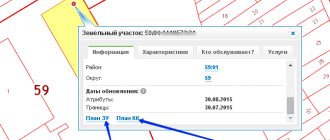Limit of responsibility between the owner and management company
Quite a lot of time has passed from the moment when citizens living in apartment buildings just began to privatize their housing, moving into the status of owners of privatized real estate.
At the same time, they pledged to properly maintain their premises, keeping them in operational condition. As for the maintenance of property classified as common property, where the residents’ property is located, management companies were authorized to carry out this work through the conclusion of appropriate agreements with them.
But where exactly is the line of operational responsibility? Unfortunately, not everyone knows the answer to this question, although this point is particularly important during the signing of agreements between home owners and management companies.
Boundaries of operational responsibility between the management company and the owner
Many people know that the owners of premises in apartment buildings are obliged by law to ensure that not only their living space is maintained in proper condition, but also the property classified as common in the apartment building.
The list of property in this category is determined in Article 36 of the Housing Code of the Russian Federation, comprising a number of objects located outside of individual housing, together with the land plot on which the residential building is directly located, and the territory assigned to the house.
Although the list of property common to all residents is detailed, this does not reduce the occurrence of disputes between the parties to an agreement on the management of common property regarding the boundaries of responsibility.
Mostly, such an agreement should be drawn up by a company that takes over the entire management process. In this regard, owners must be extremely careful when reading the terms of the agreement and, of course, before signing it.
It is imperative to verify the completeness of the list of property classified as common property, since it will be used in determining the boundaries of responsibility of each party.
By putting his signature on the document, the owner thus agrees with its terms.
In turn, the management company determined by the agreement assumes the obligation to strictly fulfill each of the points mentioned in the agreement, in accordance with the requirements determined by law and existing rules for the maintenance of property designated by the approved list as common property.
The practical side of the issue suggests that most of the disputes over the boundaries of responsibility relate specifically to the heating system.
In what cases is it compiled?
It is always recommended to draw up an act of delimitation of responsibility. In its absence, if problems arise with the networks, each party will try to shift responsibility for their repair to the other. An agreement should be concluded when signing a contract for the provision of the corresponding resource.
If this issue was not resolved when concluding an agreement with the resource supply organization, this can be done later. The legislation does not establish restrictions on the time limits for drawing up acts (agreements) delimiting powers for the maintenance of water supply networks.
Subsequent amendments to the documents signed by the parties are also permitted. When compiling them, they have the right to move away from the boundaries of the balance sheet in one direction or another. Disputes about responsibility for the maintenance of utility networks leading to apartment buildings arise quite often. Therefore, it is important to enter into agreements on the distribution of responsibility for their content and the establishment of its boundaries.
About the limits of responsibility of the management company:
Noticed a mistake? Select it and press Ctrl+Enter to let us know.
Limits of operational responsibility
Owners believe that the fact that heating batteries are in their home means they have ownership rights to them.
However, such a statement is wrong. In fact, the entire heating system, together with the radiators, is included in the structure of the common property of the house. A similar norm was legislatively enshrined in paragraph 6 of the PP of the Russian Federation under No. 491 of August 13, 2006.
For this reason, only management companies, but not the owner of the premises, at their own discretion, can maintain, repair and replace heating batteries in residents’ premises.
If we talk about the boundaries of responsibility affecting the cold water and hot water systems, as well as the gas pipeline, then they must pass along the branch of the pipeline from the transit line (riser) along the initial connecting thread at the entrance of such a pipe into the housing.
In the power supply system of an apartment building, the limit of responsibility for the owners is determined by the outgoing terminals of the input switch for the apartment, and if the latter is absent, then by the input terminals of the individual electricity meter.
The general sewer system of the house (drainage system) contains transit-type risers; for this reason, the line of responsibility lies at the point where the sewerage system inside the apartment is connected to the specified riser. Including if the connection is made outside the premises.
The line of division of responsibility in relation to the intercom is determined by the terminals for attaching the supply cable to the intercom unit.
Before you sign an agreement on the management of common property, you need to make sure that it contains a separate act that clearly delineates the responsibilities of the parties under the terms of the agreement.
No comments yet
o-nedvizhke.ru
Limits of operational responsibility | RosKvartal® Blog
Understanding the boundaries of responsibility between the RSO, the management company and the owners of residential premises in apartment buildings is important to avoid controversial situations. In judicial practice, there are often cases of disputes between the RSO and the management company regarding operational responsibility for certain sections of utility networks, regarding which no agreement has been reached.
In half of administrative cases of this kind, the court takes the side of the RSO, in this case the Criminal Code incurs large losses. To avoid this and be insured against unwanted conflicts, you need to draw up an act of delimitation of responsibility.
Limits of operational responsibility
Not for all corporate entities the legislation clearly defines the boundaries of operational responsibility and the balance sheet inextricably linked with it. These concepts are most clearly presented in clause 1 of the Rules for cold water supply and sanitation (Resolution of the Government of the Russian Federation No. 644).
According to this document, the boundary of the balance sheet is recognized as the boundary of the division of property. It, in turn, determines the boundary of operational responsibility, that is, it indicates who will bear the burden of maintaining the facility: the management organization, the RSO or the owners. The same can be said about other communal resources.
The boundary of the operational responsibility of the RSO, if we are talking about power supply, extends to the point of connection of the common house metering device with the electrical network included in the apartment building. The responsibility of the management company is the in-house power supply system and electrical devices, disconnecting devices for the apartment. The responsibility of residents is internal devices and devices after disconnecting devices in floor panels, meters in apartments.
Responsibility for heat supply is distributed as follows: RSO bears responsibility up to the point of connection of the common house metering device with the heating network included in the apartment building. The management company is responsible for the heating system risers, disconnecting devices on branches from the risers and for shut-off and control valves on the intra-apartment wiring. Residents' responsibility again begins inside their home, they are responsible for heating devices and for branches from the heating system risers after the shut-off and control valves.
The responsibility of the RSO, when it comes to water supply and sanitation, extends to the point of connection of the common house meter with the water supply network included in the apartment building. Management companies are required to monitor the condition of hot and cold water supply risers, shut-off devices on branches from risers and shut-off and control valves on intra-apartment wiring. The owners of premises in apartment buildings are responsible for the branches from the risers of the hot and cold water supply system after the shut-off and control valves, for the shut-off and control valves themselves and for the plumbing equipment in the apartments.
In a resource supply agreement, the balance sheet boundary separates utility networks, which are common property (Article 36 of the Housing Code of the Russian Federation), from other utility networks. Therefore, let us recall what applies to common property (Resolution of the Government of the Russian Federation No. 491, Article 36 of the Housing Code of the Russian Federation):
- premises in apartment buildings that are not parts of apartments and are intended to serve more than one residential/non-residential premises in the house;
- in-house engineering systems for cold and hot water supply, gas supply, heating and electricity supply.
The boundaries of operational responsibility can be external and internal. In the first case, they share the spheres of competence of the RSO and the management company (the external border of the wall of the apartment building), in the second - the management company and the owners (the internal border of the wall of the apartment building).
Read more about the composition of common property in this article.
External limits of operational responsibility
If we are talking about the external boundary of the utility networks that are part of the common property of the apartment building, then the boundary of operational responsibility between the RSO and the management company will be considered the external boundary of the wall of the house, and if there is a common house meter for a certain utility resource, the place of connection of this common house meter with the corresponding engineering network included in the MKD.
Separately, it is worth mentioning the external border of the gas supply networks that are part of the general property of the apartment building. In this case, the boundary of operational responsibility between the RSO and the management company is the point of connection of the first shut-off device with the external gas distribution network.
Often the line of operational responsibility does not run along the wall of the house. Then, a fragment of a utility network located outside the outer wall, which, it would seem, formally belongs to the area of responsibility of the RSO, falls into the zone of the management company managing the apartment building. Its content threatens large losses, so you need to carefully approach the description of the boundaries of operational responsibility in the act of delineation of responsibility.
The case when the boundary of operational responsibility passes along the external valve can be considered controversial. This happens if the external section of the utility network is part of the common property. Then the RSO carries out maintenance of this utility network at a tariff approved by the owners of the premises in the apartment building. The duty of the management company is to offer such a tariff to the owners. Repairs, including emergency ones, are carried out at the expense of RSO.
What about ownerless utility networks? That is, with such networks that are not on the balance sheet of either the management company or the RSO and are not part of the common property. Typically, such networks are transferred to municipal ownership. In turn, the local government body, within thirty days from the moment of identifying an ownerless utility network, is obliged to determine the distribution network whose utility networks are connected to the ownerless one (Clause 6 of Article 15 No. 190-FZ).
The Federal Tariff Service will have to include the costs of maintaining such a network in the RNO tariffs for further regulation. Until this is done, energy losses in this disputed section of the network, as well as repair work, are carried out at the expense of the management company in proportion to actual consumption.
Find out also how to challenge a fine for violating the Rules for maintaining common property.
Internal operational boundaries
The boundary of operational responsibility between the management company and the owners, when it comes to the internal boundary of the utility networks that are part of the common property of the apartment building, is:
- for heating - valves on the heating pipeline connections to the apartment radiator. If there are none, then the boundary passes along the threaded connection in the radiator plug.
- for cold and hot water supply - a valve at the pipeline outlet from the riser. If it is not available, the boundary is the weld seam at the pipeline outlet from the riser.
- for drainage - a socket of a shaped product (tee, cross, bend) on the riser of the drainage pipeline.
- for power supply - the place where the outgoing wire of the apartment electrical wiring is connected to the plug of an individual electricity meter, circuit breaker, RCD.
The boundary of operational responsibility between the management company and the owners (we are talking about the internal boundary of building structures that are part of the common property of an apartment building) is the inner surface of the walls of the apartment, window fillings and the entrance door to the apartment.
The enclosing load-bearing structures, the land plot (including children's and playgrounds, collective parking lots) on which the house is located, landings, corridors, roofs and attics, as well as elevators are in the area of operational responsibility of the management company.
Heating system risers belong to the common property of the owners of apartment buildings
Ministry of Construction of Russia dated 04/01/2016 N 9506-АЧ/04
It is indicated that, according to paragraph 6 of the Rules for the maintenance of common property in an apartment building, approved by Decree of the Government of the Russian Federation of August 13, 2006 N 491, the common property includes an intra-house heating system, consisting of risers, heating elements, control and shut-off valves, collective (common house) thermal energy metering devices, as well as other equipment located on these networks. Thus, an in-house heating system is a set of risers, heating elements, control and shut-off valves, a collective (common house) heat energy meter, as well as other equipment located on these networks.
According to the position of the Supreme Court of the Russian Federation, equipment located in an apartment building can be classified as common property only if it serves more than one residential or non-residential premises. Heating elements (radiators) of an intra-house heating system serving only one apartment, including those having shut-off devices (shut-off valves), the use of which will not entail a violation of the rights and legitimate interests of other owners of the premises of an apartment building, are not included in the common property.
At the same time, it is indicated that the composition of the common property of an apartment building in order to fulfill the obligation to maintain it can be determined by the owners of the premises in such a building. A certain composition of the common property of an apartment building in respect of which management will be carried out is an essential condition of the apartment building management agreement, in connection with which the owners of the premises of the apartment building and the management organization in the apartment building management agreement by drawing up an appropriate annex to the agreement can delimit the area of operational responsibility according to heating system, placing responsibility for the heating elements (radiators) located in a residential (non-residential) premises and serving one premises on the owner of this premises, and responsibility for the risers, disconnecting devices on the branches of the risers, located in the owner’s premises, but serving several premises, - to the management organization.
Go to document text »
Date of publication on the website: 04/04/2016
Share link:
www.consultant.ru
If the network boundaries are not agreed upon in the agreement with RSO
In accordance with Decree of the Government of the Russian Federation dated August 13, 2006 No. 491, local self-government bodies must determine the boundaries of the land plot related to the common property of the house for each apartment building.
Measuring instruments at the metering station must be protected from unauthorized interference in their operation, which would disrupt the reliable recording of the amount of drinking water received or waste water discharged.
Initial data is issued upon the subscriber's request within 10 days. The choice of measuring instruments and accounting scheme is made by the subscriber.
An energy supply contract is concluded with the subscriber if he has a power receiving device that meets the established technical requirements, connected to the networks of the energy supply organization, and other necessary equipment, as well as providing metering of energy consumption.







